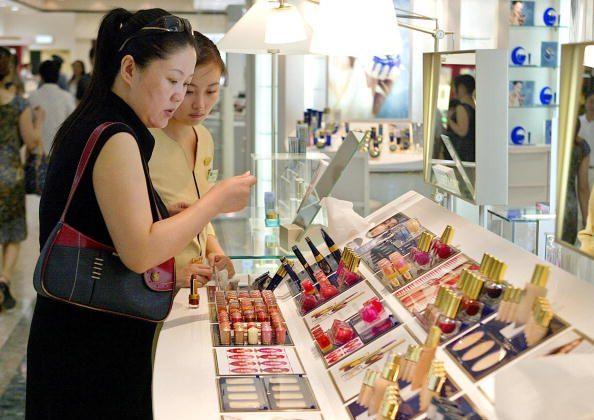U.S. customs agents have seized many counterfeits from China in recent years, with one of the most common items being fake cosmetic products.
Now, a Chinese media outlet is shedding some light on how the culprits in China operate. China’s state-run Economic Information Daily said, in a Sept. 11 article, that the production of fake cosmetics involves an established industrial chain of different criminal entities and companies.
First, criminal entities in other countries buy authentic cosmetic products and some raw materials, combining them to produce half-finished products. Then, they ship the goods to China for final touch-ups to turn them into realistic imitations of famous brands.
Some Chinese packaging companies get involved, having perfected their processes so that items they sell to counterfeiters closely resemble the authentic product. Other companies are skilled at printing fake products’ barcodes, thus making it harder for shoppers to discern authentic products from knockoffs.
Many of the fake products are sold through different e-commerce platforms in China. Thus, a purchasing receipt from the reseller is critical for a shopper to be able to confirm a product’s authenticity. As a result, some companies in China specialize in creating fake receipts to accompany fake cosmetics and fake barcodes that match the barcode on the fake product.
Shipping labels are also critical for determining whether the products were shipped from places outside of China—which would make the cosmetic products seem more likely to be authentic than a domestic address. Many shoppers are wary of China-produced products being fake and thus avoid products shipped from China.
As a result, some legitimate shipping companies have colluded with counterfeiters, providing fake shipping slips at 10 yuan ($1.46) per slip to counterfeiters.
Chinese scholars explained, in speaking with the Economic Information Daily, that the leniency of China’s criminal laws concerning counterfeit products and trademark infringement has allowed counterfeiters to run rampant.
For example, a criminal case is established only if the sales total of counterfeit products reaches 50,000 yuan (about $7,290), according to the Economic Information Daily. And the total sales of patent-infringed products need to be at least 100,000 yuan before a patent infringement (about $14,570) case is established.
In the United States, a person found guilty of trademark infringement could be fined up to $2 million and be imprisoned for up to 10 years. In China, the maximum criminal penalty is a 7-year imprisonment, while the maximum fine is 250,000 yuan ($36,447).
Shi Jianzhong, deputy principal at the China University of Political Science and Law in Beijing, called for harsher criminal penalties against counterfeiters. He added that e-commerce companies should have greater accountability under the law if products sold on their platforms are fake.
One of the largest seizures of fake cosmetics in China took place in March. According to China’s state-run Jiangsu Net, police in Suzhou City in coastal China’s Jiangsu Province arrested 16 people in multiple provinces and seized more than 155,000 fake cosmetic products. The seized items included lipsticks, perfumes, and makeup powders.
Among the seized products were 121,980 products labeled as Dior, 124,444 items labeled as Benefit, 15,784 items labeled as MAC Cosmetics, and 4,016 items labeled as Chanel. If these products were authentic, they would have an estimated market value topping 1.5 million yuan ($218,477).






Friends Read Free